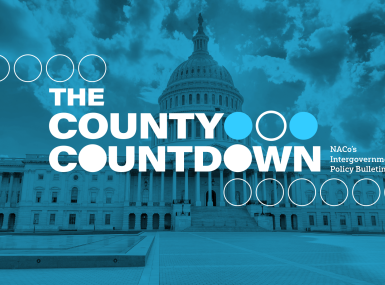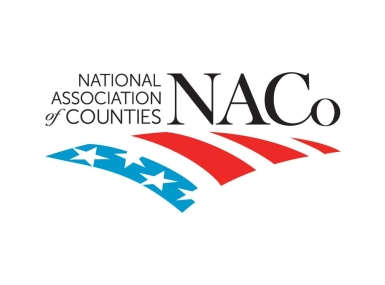Protect the Federal-State-Local Partnership for Medicaid

Author

Blaire Bryant
Upcoming Events
Related News
Action Needed
Urge your members of Congress to support the federal-state-local partnership structure for financing and delivering Medicaid services and to oppose any measure that would further shift federal and state Medicaid costs to counties–including cuts, caps, block grants and new limits on counties’ ability to raise the non-federal match or receive supplemental payments.
Background
Medicaid is a federal entitlement program administered by states, with assistance from counties, that provides health and long-term care insurance to nearly 73 million low-income families and individuals, or between one in four or five Americans. Authorized under the Social Security Act, Medicaid is jointly financed by federal, state and local governments, including counties. For Fiscal Year (FY) 2023, states and local governments contributed nearly a third of the $880 billion in total Medicaid expenditures. During the Great Recession, contributions to the non-federal share increased by 21 percent as more than 10 million additional people enrolled in Medicaid. Likewise, during the COVID-19 pandemic, enrollment in Medicaid increased by nearly 20 percent, effectively raising contributions to the program by counties and other local governments.
Counties diligently protect the health of our 314 million residents with an annual investment of $130 billion in community health. Through over 900 county-supported hospitals, 700 county-owned and supported long-term care facilities, 750 county behavioral health authorities and 1,900 local public health departments, counties deliver health services, including to those that are eligible for Medicaid reimbursement.
Counties may contribute up to 60 percent of the share of Medicaid costs that are not covered by the federal government in each state (also called the non-federal share) and counties contribute to Medicaid in 25 states. Of these, 19 states mandate counties to contribute to the non-federal share of Medicaid costs and/or the administrative, program, physical health and behavioral health costs.
Likewise, Medicaid boosts local economies by enhancing healthcare access for low-income residents, improving their health and productivity. It also cuts counties’ costs for uncompensated care and helps retain healthcare professionals in rural areas through patient revenue.
As the 119th Congress continues to work on their reconciliation package, the U.S. House of Representatives passed its version of the budget reconciliation bill, officially titled the One Big Beautiful Bill Act (OBBA) (H.R. 1), by a narrow vote on May 22. The legislation includes $1.2 trillion in spending cuts over the next decade, with more than $1 trillion originating from the House Energy and Commerce Committee, which has jurisdiction over the Medicaid program. While some elements of the bill offer relief for counties—such as delaying Medicaid Disproportionate Share Hospital (DSH) cuts and postponing the federal nursing home staffing rule—many proposed Medicaid financing reforms raise serious concerns for county governments. As key partners in financing and administering Medicaid, counties could face major fiscal and operational challenges under provisions that shift program costs, increase administrative burdens or preempt local authority. These changes threaten the integrity of the federal-state-local partnership for Medicaid and undermine counties’ ability to provide healthcare services for residents.
Key Talking Points
- Counties oppose financing reforms that shift costs to the local level. In 25 states and D.C., counties already contribute significantly to Medicaid financing. Proposals that reduce the federal share of funding or impose new cost-sharing requirements—without accounting for local fiscal realities—put additional strain on county budgets and public health systems. Cost shifts undermine the ability of counties to maintain essential services and can increase uncompensated care burdens at the local level, forcing difficult tradeoffs like reducing eligibility or cutting other essential programs to balance local budgets.
- New administrative requirements associated with work requirements or increased frequency of program eligibility and verification checks could overwhelm county systems. Counties in the nine states where they help administer Medicaid eligibility and enrollment may face significant operational challenges in verifying and enforcing proposed work and community engagement requirements. Any additional Medicaid requirements necessitate increased staff, systems and infrastructure to meet state and federal rules. Federal changes to eligibility could increase administrative burdens, risking delays or requiring more resources. Data also shows that work requirements lead to greater coverage loss, making implementation costly for both states and counties.
- Federal mandates undermine Medicaid’s state and local flexibility. Medicaid’s strength lies in its ability to adapt to local needs, supported by a balance of federal, state and county roles. Federal policies that restrict eligibility, impose financial penalties, or override local administrative discretion threaten this balance, limiting counties’ ability to deliver tailored services for residents and eroding the shared governance that makes Medicaid work.
Related News

County Countdown – Dec. 1, 2025
Every other week, NACo's County Countdown reviews top federal policy advocacy items with an eye towards counties and the intergovernmental partnership.

Counties Celebrate Key Permitting Inclusions in SPEED Act
NACo issued the following statement in response to the passage of the Standardizing Permitting and Expediting Economic Development (SPEED) Act (H.R. 4776), which advanced out of the U.S. House Committee on Natural Resources on November 20.

CMS releases new guidance on Medicaid provider tax provisions in OBBBA
The Centers for Medicare & Medicaid Services (CMS) has released new guidance outlining how it will implement significant Medicaid financing changes enacted in the One Big Beautiful Bill Act (OBBBA). These provisions restrict states’ ability to use health care-related taxes, commonly known as provider taxes, to help finance the non-federal share of Medicaid.